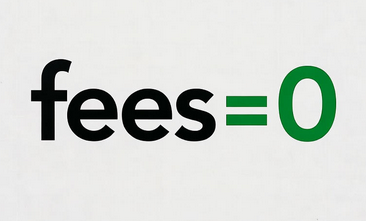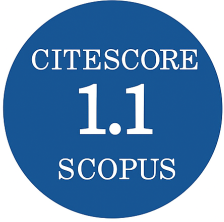Research on Coil Design to Improve Performance of Disc-Shaped Magnetorheological Brakes
DOI:
https://doi.org/10.3849/aimt.01977Keywords:
Magnetorheological Brake (MRB), coil design, Torque-to-Mass Ratio (T/M), Finite Element Method (FEM)Abstract
This study investigates the impact of various coil parameters on the working efficiency of disc-form magnetorheological brakes (MRBs). While earlier research predominantly addressed coil shape and count, the present work examines less-explored factors, including coil installation position and conductor diameter. Finite Element Method (FEM) simulations were performed to analyze the relationships among braking torque, coil geometry, and applied current, with a particular focus on enhancing the torque-to-mass
ratio (T/M) to optimize both performance and cost-effectiveness. Results demonstrate that reducing the air gap between the coil and the MR fluid layer effectively concentrates magnetic flux, yielding a substantial increase in braking torque. The study offers comprehensive insights into coil design and configuration and proposes recommendations to improve MRB performance while maintaining economic feasibility.
References
ASSADSANGABI, B., F. DANESHMAND, N. VAHDATI, M. EGHTESAD and Y. BAZARGAN-LARI. Optimization and Design of Disk-Type MR Brakes. Interna-tional Journal of Automotive Technology, 2011, 12(6), pp. 921-932. DOI 10.1007/s12239-011-0105-x.
KARAKOC, K. Design of a Magnetorheological Brake System Based on Magnetic Circuit Optimization [online]. 2007 [viewed 2025-05-05]. Available from: https://dspace.library.uvic.ca/server/api/core/bitstreams/1d9d831c-5486-4712-b294-fda034f5634f/content
TUAN, H.Q. and T.M. HOANG. Simulation-Based Investigation of the Effects of Major Rameters on Magnetorheological Brake Torque. Journal of Southwest Jiao-tong University, 2023, 58(3), pp. 244-251. ISSN 0258-2724.
SHAMIEH, H. and R. SEDAGHATI. Design Optimization of a Magneto-Rheological Fluid Brake for Vehicle Applications. In: Proceedings of the ASME 2016 Conference on Smart Materials, Adaptive Structures and Intelligent Systems. Volume 2: Modeling, Simulation and Control; Bio-Inspired Smart Materials and Systems; Energy Harvesting. Stowe: American Society of Mechanical Engineers, 2016. DOI 10.1115/SMASIS2016-9084.
QUANG, T.H., H.T. MINH, N.N. ANH and T.T. THANH. Determination of Magne-torheological Brake Characteristics by Experiment on the Test Rig. In: Proceed-ings of the 3rd Annual International Conference on Material, Machines and Meth-ods for Sustainable Development (MMMS2022). Cham: Springer, 2022, pp. 395-401. DOI 10.1007/978-3-031-31824-5_47.
SPAGGIARI, A. and E. DRAGONI. Effect of Pressure on the Flow Properties of Magnetorheological Fluids. Journal of Fluids Engineering, 2012, 134(9), 091103. DOI 10.1115/1.4007257.
WANG, H.Y., H.Q. ZHENG, Y.X. LI and S. LU. Mechanical Properties of Magne-torheological Fluids Under Squeeze-Shear Mode. In: Fourth International Sympo-sium on Precision Mechanical Measurements. Anhui: SPIE, 2008, pp. 607-612. DOI 10.1117/12.819634.
ZIMMERMAN, D.T., R.C. BELL, J.A. FILER, J.A. KARLI and N.M. WERELEY. Elastic Percolation Transition in Nanowire-Based Magnetorheological Fluids. Ap-plied Physics Letters, 2009, 95(1), 014102. DOI 10.1063/1.3167815.
QUOC, N.V., L.D. TUAN, L.D. HIEP, H.N. QUOC and S.B. CHOI. Material Char-acterization of MR Fluid on Performance of MRF Based Brake. Frontiers in Ma-terials, 2019, 6, 125. DOI 10.3389/fmats.2019.00125.
SHAH, K. and S.B. CHOI. The Influence of Particle Size on the Rheological Prop-erties of Plate-Like Iron Particle Based Magnetorheological Fluids. Smart Materials and Structures, 2014, 24(1), 015004. DOI 10.1088/0964-1726/24/1/015004.
SINGH, R.K. and C. SARKAR. Characterization of Magnetorheological Brake in Shear Mode Using High-Strength MWCNTs and Fumed Silica-Based Magnetorhe-ological Fluids at Low Magnetic Fields. Journal of Tribology, 2023, 145(3), 031702. DOI 10.1115/1.4056042.
POKAAD, A.Z. and A.Z. ZAINORDIN. Magnetorheological Braking Torque Prediction Using Multiple Disk Arrangements. In: AIP Conference Proceedings. Melville: AIP Publishing, 2024, 020021. DOI 10.1063/5.0240150.
KADAM, S., A.K. KARIGANAUR and H. KUMAR. Torque Generation in Lightweight Four Rotor Magnetorheological Brake. Sādhanā, 2024, 49, 261. DOI 10.1007/s12046-024-02607-8.
TUAN, H.Q., V.H. QUAN and T.M. HOANG. Thermal Analysis of the MRB During Downhill Braking. International Journal of Mechanical Engineering and Robotics Research, 2025, 14(3), pp. 245-251. DOI 10.18178/ijmerr.
SOHN, J.W., H.G. GANG and S.B. CHOI. An Experimental Study on Torque Char-acteristics of Magnetorheological Brake with Modified Magnetic Core Shape. Ad-vances in Mechanical Engineering, 2018, 10(1), 1687814017752222. DOI 10.1177/1687814017752222.
NGUYEN, N.D., T.T. NGUYEN, D.H. LE and Q.H. NGUYEN. Design and Investigation of a Novel Magnetorheological Brake with Coils Directly Placed on Side Housings Using a Separating Thin Wall. Journal of Intelligent Material Systems and Structures, 2021, 32(14), pp. 1565-1579. DOI 10.1177/1045389X21993912.
NGUYEN, Q.H., N.D. NGUYEN and S.B. CHOI. Design and Evaluation of a Novel Magnetorheological Brake with Coils Placed on the Side Housings. Smart Materi-als and Structures, 2015, 24(4), 047001. DOI 10.1088/0964-1726/24/4/047001.
I, W.H. and H. DU. Design and Experimental Evaluation of a Magnetorheologi-cal Brake. The International Journal of Advanced Manufacturing Technology, 2003, 21, pp. 508-515. DOI 10.1007/s001700300060.
MRF-140CG Magneto-Rheological Fluid – 1 Liter [online]. [viewed 2025-05-05]. Available from: https://www.shoplordmr.com/mr-products/mrf-140cg-magneto-rheological-fluid-1-liter
Material Manager for Altair Flux [online]. [viewed 2025-05-05]. Available from: https://altairone.com/ Marketplace?tab=Info&app=Flux
Round Enamelled Copper Wire LioA EI/AIW [online]. [viewed 2025-05-05]. Avail-able from: https://hoangkhanh.net.vn/vi/san-pham/lioa-eiaiw-1
SCHNEIDER, T., Y. HU, X. GAO, J. DUMAS, D. ZORIN and D. PANOZZO. A Large-Scale Comparison of Tetrahedral and Hexahedral Elements for Solving Elliptic PDEs with the Finite Element Method. ACM Transactions on Graphics (TOG), 2022, 41(3), pp. 1-14. DOI 10.1145/3508372.
TUAN, H.Q., T.M. HOANG, N.A. NGOC and O.T. LIM. Unveiling the Thermal Fingerprint of Magnetorheological Brakes: A Simulation Approach. In: Interna-tional Conference on Sustainability and Emerging Technologies for Smart Manu-facturing. Singapore: Springer, 2024, pp. 661-670. DOI 10.1007/978-981-97-7083-0_66.
Downloads
Published
Issue
Section
Categories
License
Copyright (c) 2025 Advances in Military Technology

This work is licensed under a Creative Commons Attribution-NonCommercial 4.0 International License.
Authors who publish with this journal agree to the following terms:
1. Authors retain copyright and grant the journal right of first publication with the work simultaneously licensed under a Creative Commons Attribution License that allows others to share the work with an acknowledgement of the work's authorship and initial publication in this journal.
2. Authors are able to enter into separate, additional contractual arrangements for the non-exclusive distribution of the journal's published version of the work (e.g., post it to an institutional repository or publish it in a book), with an acknowledgement of its initial publication in this journal.
3. Authors are permitted and encouraged to post their work online (e.g., in institutional repositories or on their website) prior to and during the submission process, as it can lead to productive exchanges, as well as earlier and greater citation of published work.
Users can use, reuse and build upon the material published in the journal for any purpose, even commercially.






